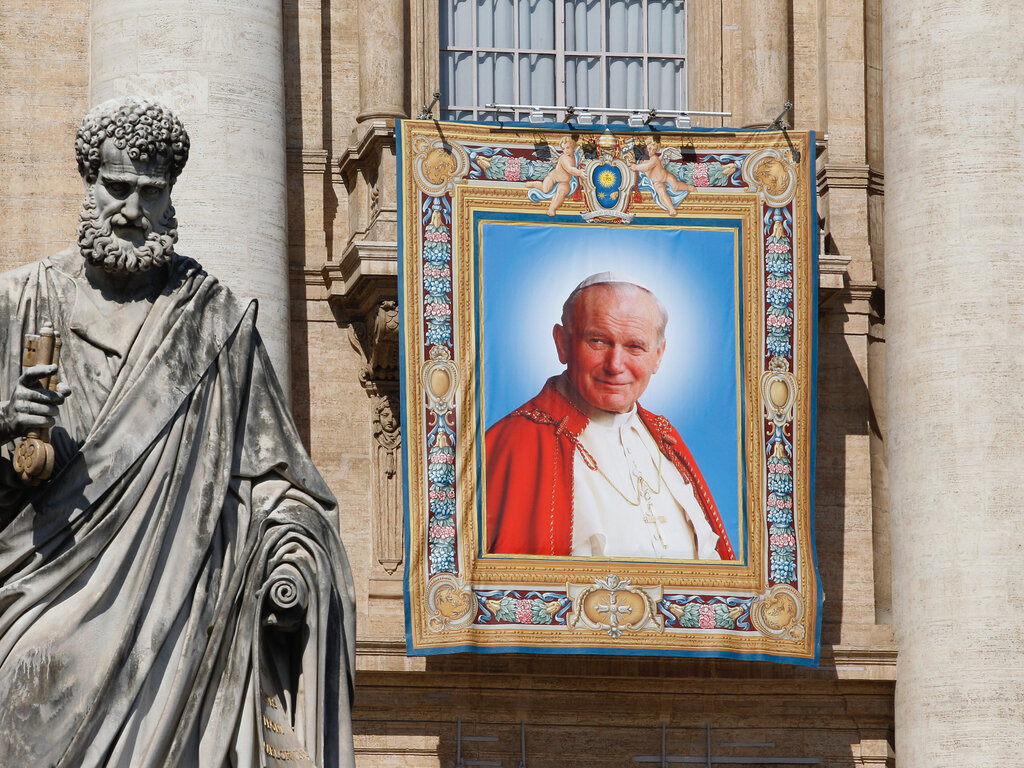Thoughts Upon My 35th Anniversary of Priesthood Ordination
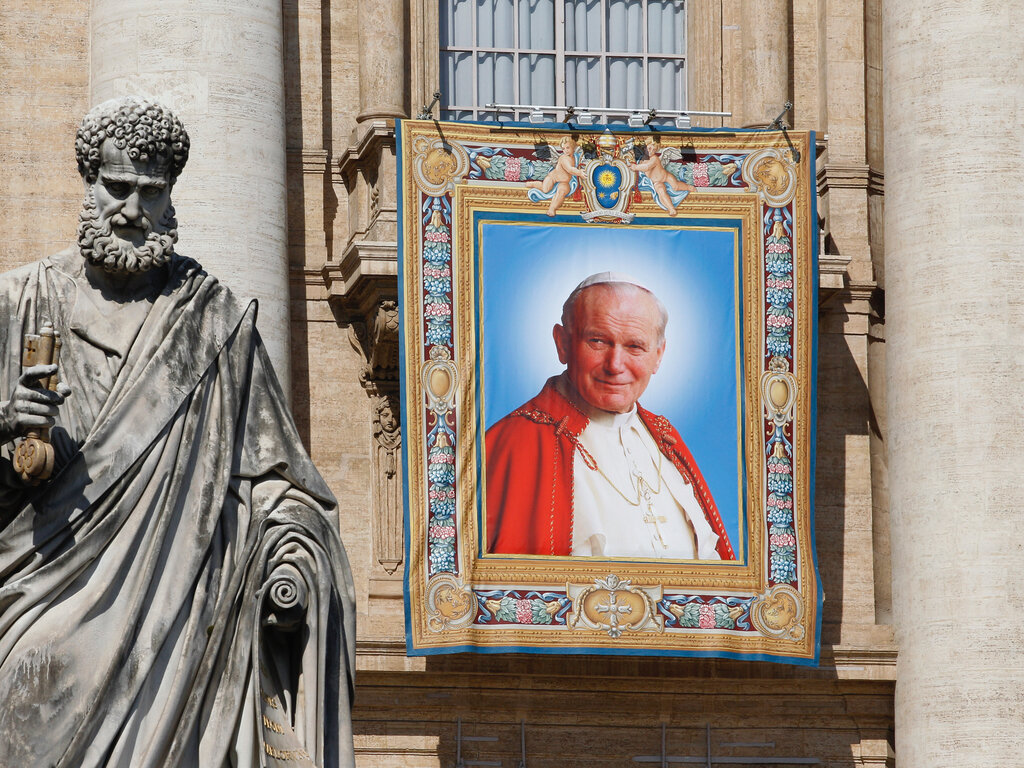 The 35 years since the priesthood ordination of Fr Gordon MacRae have taken him to one of the dark peripheries to which Pope Francis points the gaze of the Church.It was about 1:30 PM on Saturday, June 5, 1982. I remember the moment as though it were yesterday. I was lying face down in the center aisle before the altar of St John the Evangelist Church in Hudson, New Hampshire. Someone had laid out a thick oriental rug for the occasion. The scent of dry cleaning fluid filled my nostrils and left me a little dizzy.Alone there lying prostrate on the floor, I was the sole candidate for priestly ordination in the Diocese of Manchester that year. As the choir chanted a haunting Litany of the Saints, the name of Saint Michael the Archangel went by unnoticed. I was oblivious to how often I would implore his aid in the coming spiritual warfare that awaited my life as a priest.As I prostrated myself before the altar of sacrifice pondering the weight of the Sacrament in progress, I could feel the eyes of hundreds of family, friends and strangers upon me. I remember thinking of my sister kneeling just a few feet away. I could only imagine her thoughts then: “Get up, you fool! Flee!”Years later, my sister confirmed for me what I had suspected. I asked her if she recalls that moment and what she may have been thinking. Her response: “I was thinking that they took my brother from me, and now look at what they’ve done to him!” But such thoughts could not have swayed me then. They do not even sway me now. I wrote of them five years ago in “Marking Thirty Years of Priesthood: If I Knew Then What I Know Now.”More than anything else as that Sacrament of Holy Orders got underway, I was conscious of how utterly unprepared I was for life as a priest. Some of my most enduring and endearing memories of priestly formation came from the years before major seminary when I studied at Saint Anselm College in Manchester, New Hampshire.I also wrote of those glowing years, and of their impact on my life and priesthood, in a widely read post, “Priesthood in the Real Presence, and the Present Absence.” It describes something that, if left behind, is perilous in the soul of every priest and every Catholic.THE GRIEF OF THE PRESENT ABSENCE
The 35 years since the priesthood ordination of Fr Gordon MacRae have taken him to one of the dark peripheries to which Pope Francis points the gaze of the Church.It was about 1:30 PM on Saturday, June 5, 1982. I remember the moment as though it were yesterday. I was lying face down in the center aisle before the altar of St John the Evangelist Church in Hudson, New Hampshire. Someone had laid out a thick oriental rug for the occasion. The scent of dry cleaning fluid filled my nostrils and left me a little dizzy.Alone there lying prostrate on the floor, I was the sole candidate for priestly ordination in the Diocese of Manchester that year. As the choir chanted a haunting Litany of the Saints, the name of Saint Michael the Archangel went by unnoticed. I was oblivious to how often I would implore his aid in the coming spiritual warfare that awaited my life as a priest.As I prostrated myself before the altar of sacrifice pondering the weight of the Sacrament in progress, I could feel the eyes of hundreds of family, friends and strangers upon me. I remember thinking of my sister kneeling just a few feet away. I could only imagine her thoughts then: “Get up, you fool! Flee!”Years later, my sister confirmed for me what I had suspected. I asked her if she recalls that moment and what she may have been thinking. Her response: “I was thinking that they took my brother from me, and now look at what they’ve done to him!” But such thoughts could not have swayed me then. They do not even sway me now. I wrote of them five years ago in “Marking Thirty Years of Priesthood: If I Knew Then What I Know Now.”More than anything else as that Sacrament of Holy Orders got underway, I was conscious of how utterly unprepared I was for life as a priest. Some of my most enduring and endearing memories of priestly formation came from the years before major seminary when I studied at Saint Anselm College in Manchester, New Hampshire.I also wrote of those glowing years, and of their impact on my life and priesthood, in a widely read post, “Priesthood in the Real Presence, and the Present Absence.” It describes something that, if left behind, is perilous in the soul of every priest and every Catholic.THE GRIEF OF THE PRESENT ABSENCE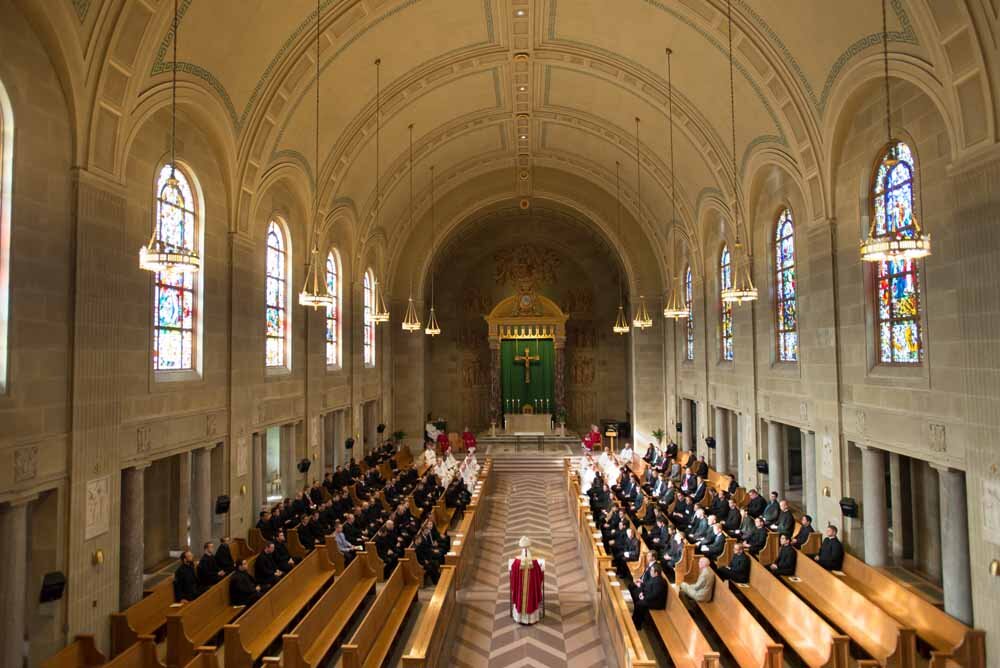 The Reverend Peter M.J. Stravinskas is the Publisher and Editor of an outstanding bi-monthly journal, The Catholic Response. I have long been indebted to him for a gift subscription that he began for me in 2009. Each issue of The Catholic Response is a small but weighty treasure trove of fine writing and theological discourse presented with great clarity and rock-solid fidelity.In addition to his duties as Publisher and Editor, Father Stravinskas writes two columns for The Catholic Response. The first is “Duc in Altum” (“Put out into the deep”); a reflection on various issues of the day that impact our faith. The other is a substantial reader “Q & A” format. As I thumbed through the first issue I received in 2009, my name jumped off a page at me from the “Q & A” section.I remember it so well because I was midway through writing one of my first posts for These Stone Walls, “Kill the Priest - Again.” It was very brief because I had to hand-write my posts back then. That post was about the betrayal of another priest who out of ignorance or fear, or both - turned away from Christ to emulate Judas in the Garden of my Gethsemane. It was a betrayal intended to wound the already stricken, and it succeeded.So when I saw my name in The Catholic Response “Q and A” section I braced myself with looming dismay. A reader had sent an inquiry to Father Stravinskas stating that she had been reading about a New Hampshire priest who may be wrongly convicted and in prison. The reader asked if this scenario was even plausible.The response of Father Stravinskas stood out among all the cowering rhetoric of the time from other Church officials in fear of a backlash from the activists at SNAP. He wrote generally of how wrongful convictions have eroded the justice system, and then added that he is personally aware of the case in point that the reader raised. Father Stravinskas added:
The Reverend Peter M.J. Stravinskas is the Publisher and Editor of an outstanding bi-monthly journal, The Catholic Response. I have long been indebted to him for a gift subscription that he began for me in 2009. Each issue of The Catholic Response is a small but weighty treasure trove of fine writing and theological discourse presented with great clarity and rock-solid fidelity.In addition to his duties as Publisher and Editor, Father Stravinskas writes two columns for The Catholic Response. The first is “Duc in Altum” (“Put out into the deep”); a reflection on various issues of the day that impact our faith. The other is a substantial reader “Q & A” format. As I thumbed through the first issue I received in 2009, my name jumped off a page at me from the “Q & A” section.I remember it so well because I was midway through writing one of my first posts for These Stone Walls, “Kill the Priest - Again.” It was very brief because I had to hand-write my posts back then. That post was about the betrayal of another priest who out of ignorance or fear, or both - turned away from Christ to emulate Judas in the Garden of my Gethsemane. It was a betrayal intended to wound the already stricken, and it succeeded.So when I saw my name in The Catholic Response “Q and A” section I braced myself with looming dismay. A reader had sent an inquiry to Father Stravinskas stating that she had been reading about a New Hampshire priest who may be wrongly convicted and in prison. The reader asked if this scenario was even plausible.The response of Father Stravinskas stood out among all the cowering rhetoric of the time from other Church officials in fear of a backlash from the activists at SNAP. He wrote generally of how wrongful convictions have eroded the justice system, and then added that he is personally aware of the case in point that the reader raised. Father Stravinskas added:
“This priest in particular has been treated unjustly in equal measure by both civil and ecclesiastical authority.”
The timing of that affirmation seemed inspired, and it set for me a standard of truth and justice that I resolved would be the foundation for my own writing at These Stone Walls. I owe a debt to Father Stravinskas for the courage of his priestly witness in this, and many concerns of the Church and priesthood.His response in my regard echoed statements of Cardinal Avery Dulles and the Reverend Richard John Neuhaus whose priestly integrity and presence I have deeply missed. This concern for the Church as a “Mirror of Justice” was also a priority for Saint John Paul II whose papacy left a deep impact on the life and priesthood of Father Stravinskas, and mine as well. A FATHER AND A PRIESTWhich brings me to the most recent issue of The Catholic Response (May/June 2017), and the Editor’s “Duc in Altum” column. As I began this post, I was searching for the words to describe why, at ordination 35 years ago, I felt so ill-equipped for priesthood. Father Stravinskas had the words I needed.He was ordained just five years before me on May 27, 1977, one year before I entered major seminary. The previous decade was a Great Unraveling propelled by social and cultural revolutions of the later 1960s and irresponsible and licentious interpretations of the Second Vatican Council. To prepare for priesthood during that time was to be in state of civil war. Father Stravinskas, from his own experience, gave words to my dismay:
“The unraveling manifested itself powerfully at the end of my senior year as two nuns married two of the priests and two other nuns “flew the coop.”
Needless to say, this was not very affirming for a boy about to embark on his own priestly vocation which I did three weeks after the promulgation of Humanae vitae by Pope Paul VI - another watershed event. The non-enforcement of that encyclical unleashed an unprecedented cycle of dissent and disobedience.“The theology years were a nightmare at every level: outright heresy taught as Gospel truth; rife liturgical abuses on a daily basis; persecution of ‘retrograde’ seminarians - with Yours Truly being told that he was ‘unsuited for ministry in the post-conciliar Church.’My seven years of supposed priestly formation were, bar none, the most unhappy years of my life, characterized by intense polarization and draconian imposition of aberrant viewpoints by those in authority... In short, my generation of priests had been robbed of our Catholic and priestly patrimony by a generation of angry rebels.” (Fr. Peter M.J. Stravinskas, The Catholic Response, May/June 2017)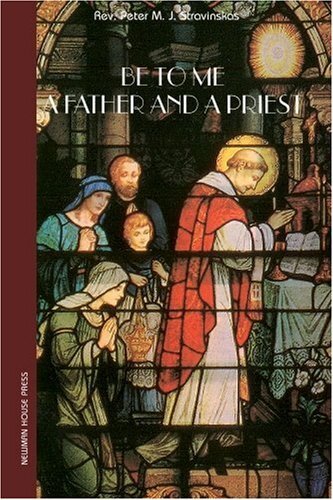 The full account of the vocation story of Father Peter M.J. Stravinskas is told in a terrific book, Be to Me a Father and a Priest (Newman House Press). He follows that story in the text with 300 pages of his most popular essays. It is a delight to read if pastoral fidelity to the Church’s truth is a worthy goal.I think it is. The “dissent and disobedience” described above by Father Stravinskas recalls so clearly for me my own experience of preparation for priesthood at St. Mary Seminary & University in Baltimore, Maryland. The oldest Catholic seminary in the Americas, St. Mary’s had a long and very strong tradition of preparing theological scholars and some of the finest pastors for ministry in America. Then came The Great Unraveling of 1968.After graduation from Saint Anselm College in 1978, I studied at “Roland Park” (as St. Mary’s became known from the area of Baltimore in which it is located) from 1978 to May of 1982. I earned, with honors, a Pontifical degree in Sacred Theology and a Master of Divinity there, a four-year professional degree.In my recent post, “How I Met your Mother: Mary and the Fatima Century,” I briefly mentioned my seminary experience as being one of “Clown Masses” and “academic prowess over spiritual depth.” One of our readers, Tom, commented that this seminary had undergone a Vatican review in the 1990s that completely turned it around, but not in time to save a decade of priests ordained into great polarity.
The full account of the vocation story of Father Peter M.J. Stravinskas is told in a terrific book, Be to Me a Father and a Priest (Newman House Press). He follows that story in the text with 300 pages of his most popular essays. It is a delight to read if pastoral fidelity to the Church’s truth is a worthy goal.I think it is. The “dissent and disobedience” described above by Father Stravinskas recalls so clearly for me my own experience of preparation for priesthood at St. Mary Seminary & University in Baltimore, Maryland. The oldest Catholic seminary in the Americas, St. Mary’s had a long and very strong tradition of preparing theological scholars and some of the finest pastors for ministry in America. Then came The Great Unraveling of 1968.After graduation from Saint Anselm College in 1978, I studied at “Roland Park” (as St. Mary’s became known from the area of Baltimore in which it is located) from 1978 to May of 1982. I earned, with honors, a Pontifical degree in Sacred Theology and a Master of Divinity there, a four-year professional degree.In my recent post, “How I Met your Mother: Mary and the Fatima Century,” I briefly mentioned my seminary experience as being one of “Clown Masses” and “academic prowess over spiritual depth.” One of our readers, Tom, commented that this seminary had undergone a Vatican review in the 1990s that completely turned it around, but not in time to save a decade of priests ordained into great polarity.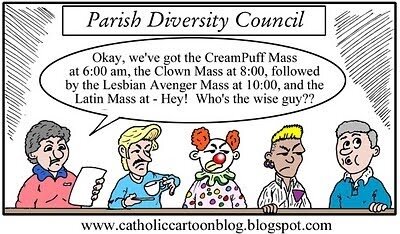 THE SAINT WHO CHANGED THE MODERN WORLD
THE SAINT WHO CHANGED THE MODERN WORLD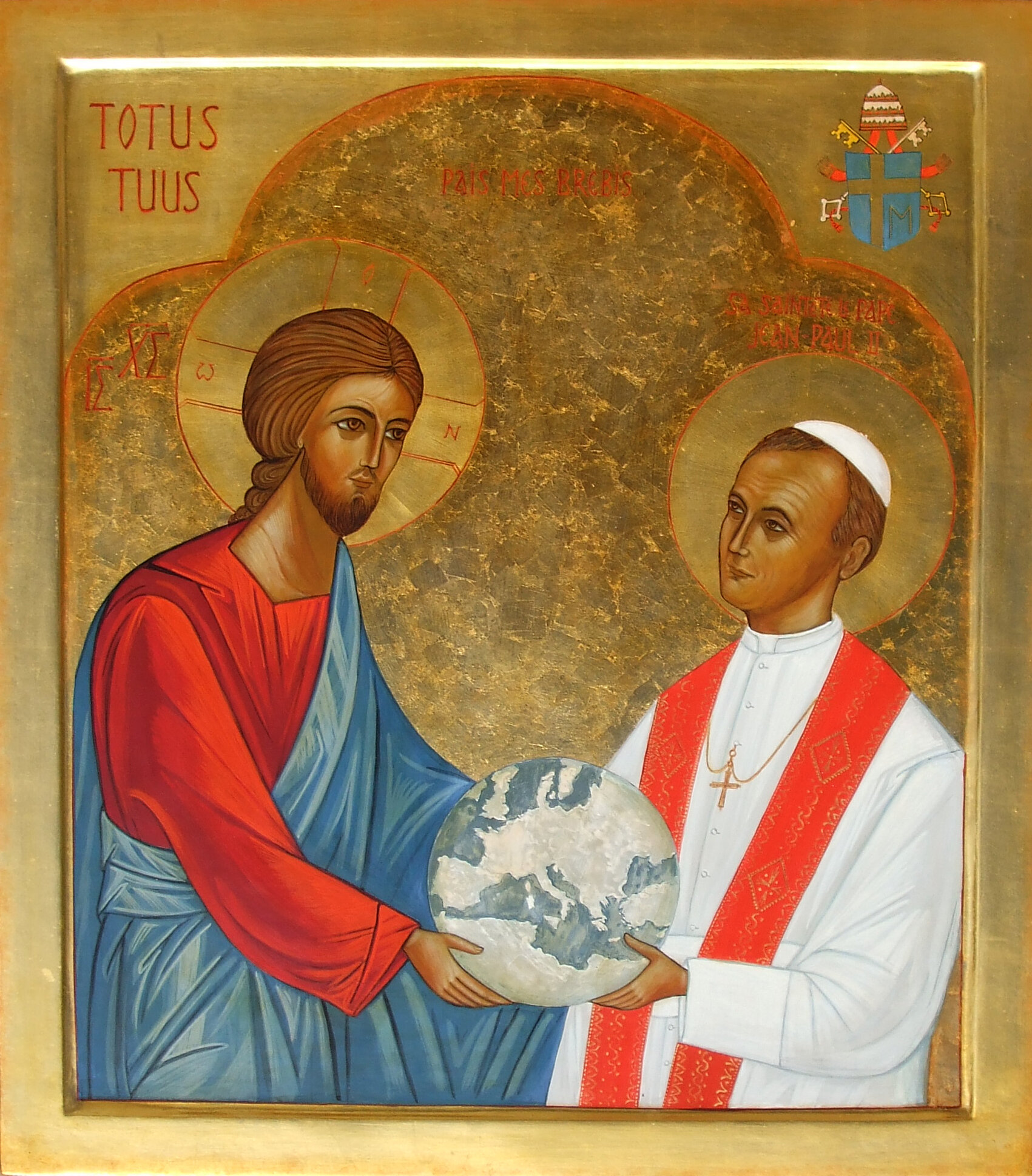 In the late 1970s, I encountered the same nightmare of open dissent, liturgical abuses, and “outright heresy taught as Gospel truth” described by Father Stravinskas above. He attended another major seminary, but in the same time period or just a year or two before. The 1990s Vatican review launched by Pope John Paul II applied to all U.S. seminaries.The review was ridiculed by the National Catholic Reporter, the unofficial voice for dissent, but the following story may convey why such a review was both necessary and long overdue. More than any other account of my seminary years, this story captures the dismay, betrayal, and persecution experienced by faithful seminarians like Father Peter Stravinskas whose vocation was called into question solely due to their orthodoxy and fidelity, traits deemed “unsuitable for ministry in the post-Conciliar Church.”In 1979, in my first year of theology studies, the Vatican announced a visit to Washington DC by Pope John Paul II. Unknown to the seminarians at Roland Park in Baltimore, an invitation had been extended to all major seminaries in the region to take part in a Mass and audience for seminarians with the Holy Father.The invitation included seminarians at Catholic University of America, Theological College in Washington, St. Charles Borromeo Seminary in Philadelphia, Mount St Mary Seminary in Emmitsburg, MD, and St Mary’s in Baltimore. But also unknown to us, our seminary rector - a priest of my own diocese - declined the invitation on our behalf without informing us. When the seminarians at Roland Park learned of this, many launched an open revolt. What followed was a bizarre sign of the times.We could only imagine the motive of a seminary rector intent on barring those preparing for priesthood from the privilege of meeting and participating in Mass with Pope John Paul II. And so when we dissented against his dissent, the rector took on the demeanor of a petty tyrant, adopting the same autocratic impulse for which he would fault the papacy at that time.The 100+ seminarians who signed a petition of protest - and I was one of them - were gathered into a meeting hall and warned that attending Mass with the Pope will not be authorized, and that exams and other work missed on that day will not be allowed to be made up. Seminarians who dissented would face censure. Crucial exams were then scheduled for the same day. Many seminarians contacted their bishops to intervene. None did.Those who attended the Mass were labeled in routine seminary evaluations sent to their bishops as “immature, impulsive, rebellious against authority.” Others who openly exhibited their orthodoxy were labeled as pathologically rigid. These terms would all but guarantee that their suitability for ordination would be called into question.I thought of this story, too, as I lay face down alone on that rug to pray the Litany of the Saints on June 5, 1982. I knew that when I finally stood up, I would be ordained into a divided and polarized Church and world, a Church and world that Saint John Paul II worked diligently to set aright. I see the evidence for that today, and much hope.The evidence for that hope is in priests like Father Peter M.J. Stravinskas as he marks forty years of priestly witness to the Church in the Spirit of Cardinal Avery Dulles and Father Richard John Neuhaus. And Bishop René Gracida, Father George David Byers, Father Stuart MacDonald, Father Tim Moyle, Father Joseph Coffey, Monsignor Michael Palud, all of whom read and promote These Stone Walls. Their priestly witness and fidelity have shaped my own, providing the formation that was otherwise missing.Pope Francis has summoned the gaze of the Church to the “dark peripheries” like the one to which priesthood has taken me. Two-thirds of my life as a priest has been contained here, and I like to think that, despite the spiritual warfare that engulfed the priesthood - and not just mine - I would still not flee.Editor’s Note: We are still in the Octave of Pentecost in the traditional calendar. Enter into the Solemnity of Pentecost with these other posts from These Stone Walls:
In the late 1970s, I encountered the same nightmare of open dissent, liturgical abuses, and “outright heresy taught as Gospel truth” described by Father Stravinskas above. He attended another major seminary, but in the same time period or just a year or two before. The 1990s Vatican review launched by Pope John Paul II applied to all U.S. seminaries.The review was ridiculed by the National Catholic Reporter, the unofficial voice for dissent, but the following story may convey why such a review was both necessary and long overdue. More than any other account of my seminary years, this story captures the dismay, betrayal, and persecution experienced by faithful seminarians like Father Peter Stravinskas whose vocation was called into question solely due to their orthodoxy and fidelity, traits deemed “unsuitable for ministry in the post-Conciliar Church.”In 1979, in my first year of theology studies, the Vatican announced a visit to Washington DC by Pope John Paul II. Unknown to the seminarians at Roland Park in Baltimore, an invitation had been extended to all major seminaries in the region to take part in a Mass and audience for seminarians with the Holy Father.The invitation included seminarians at Catholic University of America, Theological College in Washington, St. Charles Borromeo Seminary in Philadelphia, Mount St Mary Seminary in Emmitsburg, MD, and St Mary’s in Baltimore. But also unknown to us, our seminary rector - a priest of my own diocese - declined the invitation on our behalf without informing us. When the seminarians at Roland Park learned of this, many launched an open revolt. What followed was a bizarre sign of the times.We could only imagine the motive of a seminary rector intent on barring those preparing for priesthood from the privilege of meeting and participating in Mass with Pope John Paul II. And so when we dissented against his dissent, the rector took on the demeanor of a petty tyrant, adopting the same autocratic impulse for which he would fault the papacy at that time.The 100+ seminarians who signed a petition of protest - and I was one of them - were gathered into a meeting hall and warned that attending Mass with the Pope will not be authorized, and that exams and other work missed on that day will not be allowed to be made up. Seminarians who dissented would face censure. Crucial exams were then scheduled for the same day. Many seminarians contacted their bishops to intervene. None did.Those who attended the Mass were labeled in routine seminary evaluations sent to their bishops as “immature, impulsive, rebellious against authority.” Others who openly exhibited their orthodoxy were labeled as pathologically rigid. These terms would all but guarantee that their suitability for ordination would be called into question.I thought of this story, too, as I lay face down alone on that rug to pray the Litany of the Saints on June 5, 1982. I knew that when I finally stood up, I would be ordained into a divided and polarized Church and world, a Church and world that Saint John Paul II worked diligently to set aright. I see the evidence for that today, and much hope.The evidence for that hope is in priests like Father Peter M.J. Stravinskas as he marks forty years of priestly witness to the Church in the Spirit of Cardinal Avery Dulles and Father Richard John Neuhaus. And Bishop René Gracida, Father George David Byers, Father Stuart MacDonald, Father Tim Moyle, Father Joseph Coffey, Monsignor Michael Palud, all of whom read and promote These Stone Walls. Their priestly witness and fidelity have shaped my own, providing the formation that was otherwise missing.Pope Francis has summoned the gaze of the Church to the “dark peripheries” like the one to which priesthood has taken me. Two-thirds of my life as a priest has been contained here, and I like to think that, despite the spiritual warfare that engulfed the priesthood - and not just mine - I would still not flee.Editor’s Note: We are still in the Octave of Pentecost in the traditional calendar. Enter into the Solemnity of Pentecost with these other posts from These Stone Walls:
